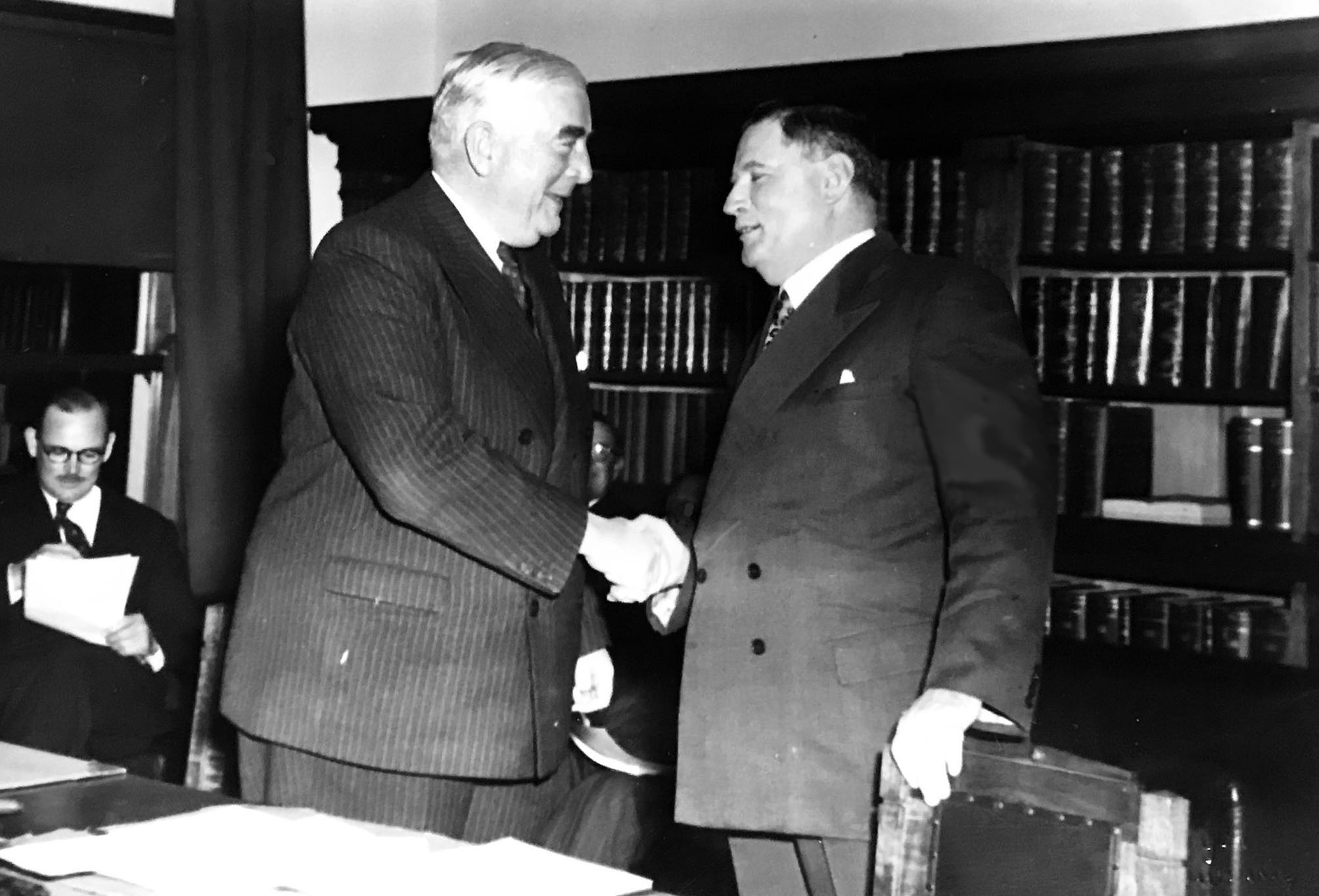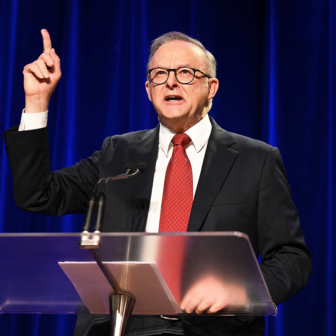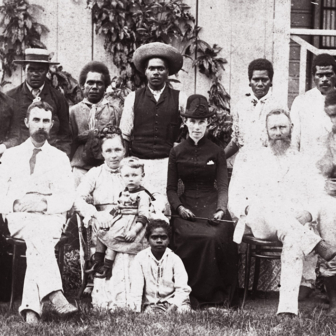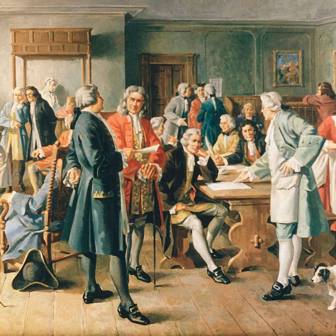The demise of the Coalition agreement this week — seemingly temporary — called into question the common assumption that Australia has a “two-party” system. The Liberal and National parties have become so intertwined, it’s often assumed, that they essentially function as metropolitan and rural manifestations of the same organisation, even having merged in the Northern Territory and Queensland.
The sense of continuity has been reinforced by the fact that the Coalition predates the modern Liberal Party by more than two decades. The fact that Coalition governments had a double-barrelled name only in the first instance — the Bruce–Page governments of the 1920s — implied a level of submergence that even the Nationals ultimately acknowledge.
Many commentators have been quick to point out in recent days that splits have happened before. But a keen student of Australian political history would also know that we haven’t always had a two-party system, even broadly defined. In the first decade after Federation the national parliament was made up of what Alfred Deakin famously dubbed the “three elevens”: the Protectionist, Free Trade and Labor parties. The cricketing metaphor encapsulates the common view that a Westminster-style parliamentary democracy requires two rather than three sides in order to function healthily.
That two-party view gained prominence because the rise of the Labor Party created a perception that it was able to use its balance of power to extract concessions greater than its electoral strength. Non-Labor parties felt that this leverage would undermine the direct democratic accountability that a straightforward choice between two sides facilitated. It was NSW Liberal Leader Joseph Carruthers who first made the case for well-defined “lines of cleavage” in Australian politics, and his success in imposing them on his state’s parliament helped lead to the “fusion” of the federal Protectionist and Free Trade parties into a united Liberal Party in 1909. After all, both parties were successors to a pervasive nineteenth-century liberal political culture, and while they disagreed on tariffs, each had conservative and progressive wings.
The fusion did undoubtedly create a “two-party” system, but not a particularly enduring one. By the 1917 election the Liberals had transformed into the Nationalists, and the next poll in 1919 saw the birth of the centre-right’s deputy sheriff, the Country Party. This new rural entity had emerged in response to the immense stresses the Great War placed on Australian agriculture, but also reflected the view that the Nationalists’ ex-Labor prime minister, Billy Hughes, had not left all of his left-wing ideas at the party-room door.
In other words, the notion that the Country Party would help to keep the centre-right “conservative” enough was there from the beginning, although it was counterbalanced by some of that party’s “agrarian socialist” notions that would often create clashes with their city counterparts.
The birth of the Country Party was a bloody political affair that left many Nationalist casualties in conservative rural electorates — and a surprising number of them happened to be the direct relatives of an aspiring barrister by the name of Robert Gordon Menzies. They included his uncle, political mentor and federal member for Wimmera, Sydney Sampson, and at the state level his father, the MLA for Lowan, James Menzies, and even his soon-to-be father-in-law and MLA for Indi, John Leckie.
Suffice to say that Menzies was not initially enamoured of his future governing partner, which he viewed as representing sectional economic interests rather than universal political principles — a failing he also attributed to the Labor Party, with its explicit trade union basis. In 1929 he would resign from the McPherson state government because he felt the Country Party was extracting unprincipled concessions in the same way Labor once had.
But however contentious an alliance with the Country Party was in the early days, its electoral strength could not be denied. Long before Labor’s Gough Whitlam declared that “only the impotent are pure,” the centre-right of Australian politics accepted the necessity of pragmatism and compromise in securing political success: first in the fusion, then in embracing Hughes, then in ousting him to secure Country Party support, and finally in accepting another ex-Labor leader, Joseph Lyons, for what they now called the United Australia Party.
There were clear justifications in each instance. The Great War and the Great Depression called for extraordinary political arrangements to meet what were seen as existential crises. When Lyons died on Good Friday 1939, Menzies found himself prime minister at the outbreak of the second world war, but his attempt to make a similar appeal for authority based on emergency conditions never achieved the cut through he needed to win the 1940 election outright. A hung parliament created the political instability that would see him resign as prime minister in August 1941.
By that time, a United Australia Party built on compromise had so little left to unite its disparate parts that it was forced to turn to the Country Party’s Arthur Fadden to lead it. Fadden was prime minister for “forty day and forty nights” before two independents crossed the floor and brought an end to almost a decade of centre-right governance. Fadden stayed on as opposition leader even after the defeat, a situation the party endorsed by electing the octogenarian Hughes as leader of what was obviously and would prove to be a dying United Australia Party.
The lesson Menzies drew from all of this was that while pragmatism and compromise are essential to political success they must never be a raison d’être in and of themselves. Parties need to stand for something, not only to give the electors something to vote for, rather than simply against, but also for their own internal sense of stability and purpose.
The Australian liberal tradition had been so dominant during the nineteenth century that it ended up with a key role in early twentieth-century politics by virtue of “conserving” the liberal order it had already established. So it didn’t take Menzies long to find what the main party of the Australian centre-right should stand for. In essence, it was a time capsule containing the liberal values of former British prime minister William Gladstone infused with a local sense of optimism, enterprise, social mobility and the desirability of widespread property ownership.
In order to develop those ideals into a new party and policy platform, and then convey these to the electorate, it was necessary to take a break from the joint party room, and above all the abnormal situation in which the Country Party had been allowed to lead it. Hence, in the aftermath of the 1943 election wipeout, Menzies made it a central plank of his pitch for the UAP leadership that he would strike out on a new and more independent course. As he explained in one of his Friday evening radio addresses made famous by “The Forgotten People,” “[E]ach Opposition Party feels that it can render its best service to Australia by developing its own particular character and individuality.”
As the modern Liberal Party tries to recover from the worst primary vote in its eighty-year history, a strong case can be made that a temporary cessation of the Coalition agreement offers a similar opportunity for the Liberal and National parties to take some time to develop their “character and individuality.” Since the fall of the Howard government in 2007, they have never really been far enough away from power to engage in the scale of renewal that laid the platform for Menzies’s success through the fifties and sixties, or for that matter John Howard’s success through the late nineties onwards. Like the old UAP, compromise has ruled the day, and both ideals and ideas have largely been sidelined.
For each party, but especially the Liberals, getting their own house in order and then coming back to the negotiating table with well-developed and philosophically informed policies can only be good for the health of Australian democracy. But that the marriage should ultimately be reconciled is in no doubt. Deakin and Carruthers wanted a two-party system for a reason, and Menzies vehemently agreed with them, declaring that “‘the very idea of… voters in a country like this being so indifferent to the political future of their country that they are content to have no Party principles or Party allegiance, but take 74 random dips in the lucky bag at each election is the height of absurdity.”
It’s major parties, able to win majority government, that ultimately secure mandates and can be held accountable for failing to live up to them. In doing so they give the electors a far more tangible choice in how they are governed. For all of Menzies’s early misgivings about his Country Party partners, by the time of his retirement he was able to list maintaining the Coalition as one of his proudest political achievements. •




